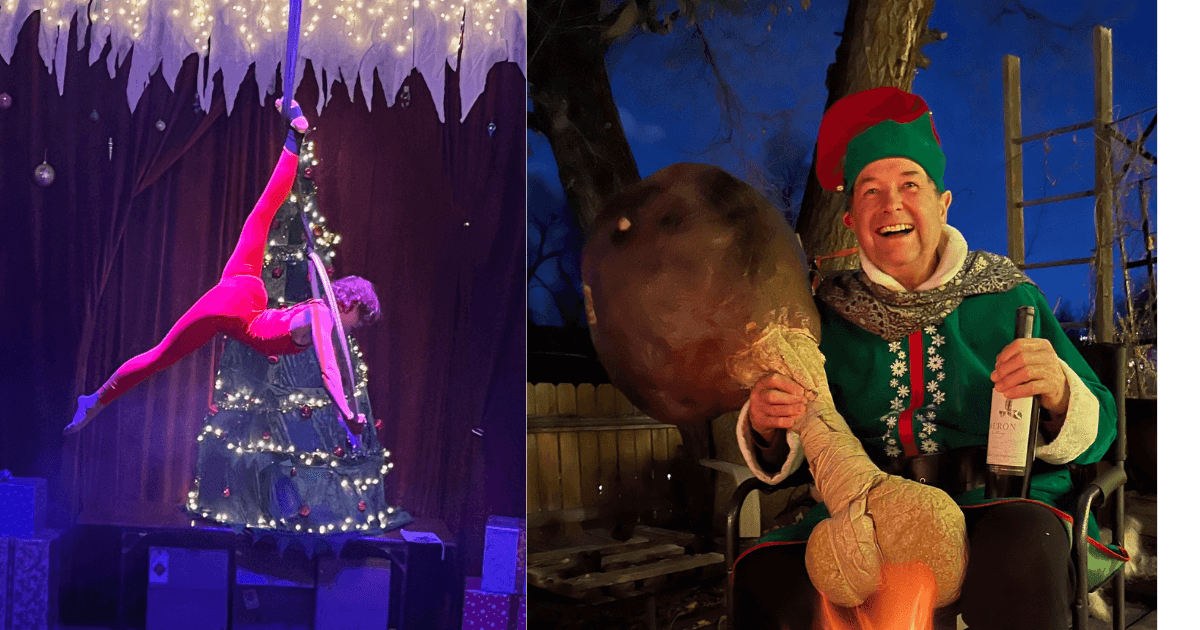The company continues to improve, tackling challenging works in this medley.
Twyla Tharp’s In the Upper Room, the closer on this year’s Masterworks program by Colorado Ballet, is a killer ballet. Philip Glass composed the 39-minute musical piece specifically for the ballet, and his propulsive score drives the 13 dancers through nine athletic, exhilarating sections that push them to their physical limits. Considered one of the master ballets of the 20th century and performed by virtually every American ballet company of note, it is one of the most challenging and exciting works a company can take on.
With its alternating demands of extreme physicality and elegant choreography — the dancers are mostly in tennis shoes but occasionally on pointe — the sections blend seamlessly as solo dancers, small groups or the entire ensemble enter and exit through a hazy fog that blurs the action while heightening its drama. Jennifer Tipton’s original lighting, recreated here by Todd Elmer, creates an otherworldly environment of shadows and clarity that constantly keeps the audience guessing about what will happen next. Norma Kamali’s black and white striped pajama-like costumes, always touched with an element of red or sometimes all in red, add to the sense of expectation of where the ballet is going.
It’s an understatement to say that it’s the rare company that can do In the Upper Room justice. Tharp’s twitchy, flamboyant choreography is always difficult, but here it requires dancers who can alternate in a matter of seconds between sharp, lightning-fast speed and a looseness that seems to flow like water through and off the body. Tharp created it on her own company in 1986 with dancers who had mastered her idiosyncratic style, and since then it has been performed around the world by companies and dancers with a wide range of training.
The most successful productions I have seen over the years have been performed by those with a solid grounding in George Balanchine’s rapid-fire style, which is not generally the case with Colorado Ballet’s troupe. Although some of the dancers on opening night were able to capture the sharpness and grace of Tharp’s compelling steps, the performance of the work often lacked the intensity and energy that Tharp demands.

Jessica Payne, Patrick Mihm and Ever Larson in ‘Serenade.’ | Photo: Amanda Tipton Photography
Serenade
The opening ballet, Balanchine’s stunning Serenade, is much more suited to Colorado Ballet’s elegant dancers, and the ensemble looked beautiful in Serenade’s languorous style. The opening sequence of a female corps posed in flowing long net dresses and illuminated as if by moonlight is breathtaking; the moment when, in unison, they raise their arms and shield their eyes is iconic in the ballet canon.
Created by Balanchine in 1934 for his students, it was his first work in America. Although it has gone through several revisions, it remains in the repertoire of what became The New York City Ballet and, justifiably, in the rep of many ballet companies throughout the world. Colorado Ballet’s dancers easily give this moving ballet its due.
On opening night Jennifer Grace, Asuka Sasaki (who retires after this program) and Alexandra Wilson were as graceful as angels in their solo roles supported by the entire company. As they demonstrated, if there is any ballet that so completely captures Balanchine’s famous quote “Ballet is Woman,” Serenade is it.

Alexandra Wilson and Christopher Moulton in ‘Petite Mort.’ | Photo: Amanda Tipton Photography
Petite Mort
Rounding out this mixed bill program is Jiri Kylian’s Petite Mort. It was the 46th ballet Kylian created for the Nederlands Dans Theater after he became artistic director of that company and, like Serenade, it has become iconic in the world of contemporary ballet.
Premiered in 1991, it uses very slow movements from two Mozart piano concertos as it explores intimate relationships between men and women (the title refers to a term generally used as a euphemism for orgasm), with an occasional touch of humor. Kylian’s choreography juxtaposes classical lines with angular, more modern shapes as the mood shifts from action (men flashing swords) to sensual to spiritual.
The six pas de deux are beautifully executed by Mackenzie Dessens Studinski and Chris Mitchell, Leah McFadden and Sean Omandam, Jessical Payne and Liam Hogan, Sarah Tryon and Bryce Lee, Ariel McCarty and Patrick Mihm, Alexandra Wilson and Christopher Moulton. Each couple merges into a single entity, perfectly attuned to the intimacy of the other.
Petite Mort was the first ballet I saw Colorado Ballet perform after moving to Denver in 2019. At that time, it was a little shaky and tentative in certain parts. But now, as the company continues to grow in technical skill and confidence, its performance of this spare, memorable work is worthy of the acclaim Kylian’s brilliant choreography deserves.
Alice Kaderlan is a long-time dance and theatre critic and general arts writer. She has written for newspapers and online news sites in Seattle, Washington D.C., Pittsburgh and other cities for more than 40 years. She has also appeared on various public radio stations including WAMU-FM in D.C. and KUOW in Seattle and covered arts for NPR. She currently lives and writes in Denver.





Master Works ended the season on a high note! “In the Upper Room” had me mesmerized with its outstanding choreography, music and athletic punch! To me, Master Works is a wild card production and I am here for it! Petite Mort, by the way, did not disappoint. The entire production, all three segments, magnificent! RJ (Denver, CO)
Great review Alice, thank you for breaking down each segment of Master Class. I am really looking forward to the season finale. Petite Mort intrigues me the most to see how things have progressed since 2019. I am a faithful season ticket holder and the ballet just brings me great joy; I will be there on Sunday! RJ